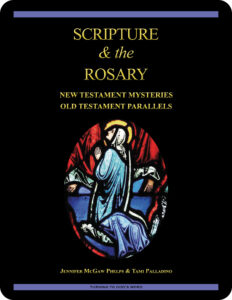YHWH
 What’s indicated by the letters YHWH in reference to God?
What’s indicated by the letters YHWH in reference to God?
In the book of Exodus 3:14 (NABRE), God tells Moses his name: “I am who I am.” God’s name in future Hebrew literature derives from this statement. The exact pronunciation and meaning of this name is uncertain, though it very probably comes from the Hebrew vowel meaning “to be” and means something close to “he who causes to exist.”
God’s name is depicted in Hebrew using what is called the tetragrammaton, from a Greek word meaning four letters. The four letters, depicted in English as YHWH, are the four consonants in the Hebrew form of God’s name. Hebrew doesn’t have letters representing vowel sounds but instead uses supplementary marks called vowel pointings. Because of the sacred character of this name, it wasn’t pronounced by the Israelites and Jews. To convey that this name was not to be spoken, vowel pointings were changed to those used in the word Adonai, the Hebrew word meaning “Lord,” to indicate that readers were to say the word Adonai rather than pronouncing God’s name. As a result of this shift, the sacred Tetragrammaton comes into English as LORD. (In printed materials small capital letters are used for the lowercase letters, while most digital texts indicate the sacred Tetragrammaton by using all capital letters.)
The trouble that the ancients went to in order to avoid pronouncing the name of God strongly emphasizes how sacred they viewed the presence of God to be. For us in the present day, such an emphasis on the potentially sacred nature of language raises questions about how we view and use language. Can you think of any sacred uses of language?
related topics: “I Am”; name; Trinity
you also may like our study of Scripture & the Rosary (digital only)
 Scripture & the Rosary: New Testament Mysteries, Old Testament Parallels, a 26-lesson Catholic Bible study with an imprimatur, looks at the biblical foundations of the Rosary. The study includes lessons on Pope St. John Paul II’s Rosarium Virginis Mariae (Rosary of the Virgin Mary), the Apostles’ Creed, and the Luminous Mysteries as well as the original 15 Mysteries of the Rosary. Color photographs of stained glass windows depict key scenes in the lives of Jesus and Mary. Free digital lessons rotate throughout the year on our website.
Scripture & the Rosary: New Testament Mysteries, Old Testament Parallels, a 26-lesson Catholic Bible study with an imprimatur, looks at the biblical foundations of the Rosary. The study includes lessons on Pope St. John Paul II’s Rosarium Virginis Mariae (Rosary of the Virgin Mary), the Apostles’ Creed, and the Luminous Mysteries as well as the original 15 Mysteries of the Rosary. Color photographs of stained glass windows depict key scenes in the lives of Jesus and Mary. Free digital lessons rotate throughout the year on our website.
 Click on the picture of the statue of Moses with horns (above) to learn more about Lost in Translation. A new entry is archived each Monday. Contact us to receive Lost in Translation by email every week. You may use any of the contact links on our website to ask Matthew a question.
Click on the picture of the statue of Moses with horns (above) to learn more about Lost in Translation. A new entry is archived each Monday. Contact us to receive Lost in Translation by email every week. You may use any of the contact links on our website to ask Matthew a question.
